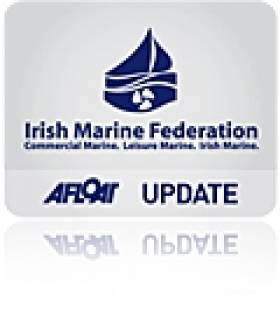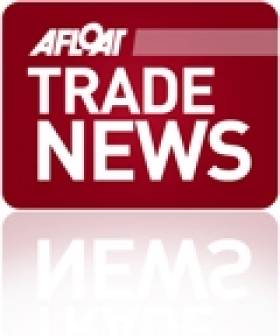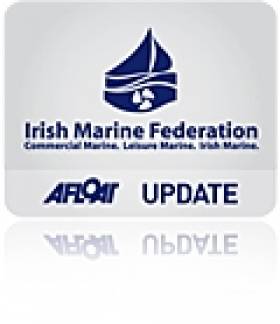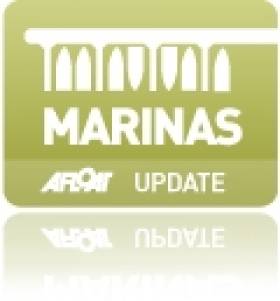Displaying items by tag: Irish Marine Federation
Irish Marine Federation Makes Representations on 'Green Diesel'
#greendiesel – The Irish Marine Federation (IMF) has made representations to the Revenue Commissioners in relation to a proposed ban on the use of so called 'Green Diesel', (or Red Diesel in Northern Ireland) for leisure boats pointing out difficulties changes would impose on the boating industry in general.
Ireland, like the UK, has had a differential pricing system for auto fuels, with higher taxes and hence retail prices for fuels used in road vehicles.
The best-known example is the price differential on green diesel, about 90c per litre cheaper than road diesel and available to boaters, farmers and other users of diesel-powered vehicles.
Green diesel is almost identical to ordinary auto-diesel apart from the dye which is added.
The IMF has also made a separate budget submission through the Irish Tourist Industry Confederation (ITIC) asking that if the change to white diesel is enforced by the EU that the VAT rate of 13.5% be imposed on this fuel as opposed to the 23% attached to white diesel. This would have a neutral effect on Revenue and would mean a smaller increase in the cost of fuel for boat owners say the Federation.
#OUR OCEAN WEALTH - The Irish Marine Federation's (IMF) submission to the Government's consultation process on harnessing the potential of Ireland's vast marine resources has been published online.
In the submission, the trade federation representing all aspects of the marine industry outlines its position for Our Ocean Wealth, the outline for an integrated Marine Plan for Ireland launched by Minister for the Marine Simon Coveney earlier this year.
Regarding the potential for marine leisure tourism, the IMF emphasises Ireland's strengths in cruising, sailing and angling, plus diving, surfing and other extreme sports, as well as the "potential for developing new products around eco tourism".
According to the report: "The sea and our coastline should be treated as if it were a public park with free access to the public with proper facilities in place to ensure sustainability."
Further to this involves the provision of "more egalitarian access to the sea and to safe harbours or marina berthing availability".
A number of "impediments to development" are also highlighted in the submission, ranging from the need for reform of the Foreshore Act to the inconsistent approach of local authorities to the development of Ireland's coastal resources.
The IMF submission is available as a PDF to read or download HERE.
Kerry Harbour Users Say No to Over-Regulation
#IRISH HARBOURS - Protesters took to the water off Kerry's piers last month in an organised swim drawing attention to proposed harbour bylaws designed to regulate the activities of water users.
“We need to make the public aware they have to make submissions,” Denise Collins told The Irish Times from Kells, which hosted one of the largest swims. “Traditional activities such as swimming will be over-regulated, we fear.”
The proposed bylaws would give Kerry County Council greater control over 16 of the county's 57 harbours and piers, including Kells, Kenmare, Portmagee, Brandon and Ventry.
Under the new bylaws, strict regulations would be placed on the use of loudhailers, landing and unloading passengers and freight, waste and even movement around the harbour.
"Draconian" charges are also set to be imposed on fishermen and other harbour users, while campaingers also feel that a ban on swimming and diving could also be added to the list.
The proposed bylaws already suffered a set-back earlier this year when Kerry County Councillors decided to restart the consultation process to allow the fishing industry, tourism operators and other interests more time to make submissions.
According to the Irish Examiner, only two submissions had been received by the council as of its January monthly meeting, despite senior council officials working for months on the draft proposals.
Cllr Toiréasa Ferris commented that the proposed charges in particular "would have huge implications for fishermen, some of whom might currently be earning only between €40 and €50 for a 14-hour day."
As previously reported on Afloat.ie, charges may also soon be hiked on yachts berthing at Ireland's main fishing harbours, a list that includes Dingle in Co Kerry.
Irish Marine Federation chairman David O'Brien expressed concern at the potential for such charges to damage "the good tourism dividend for coastal towns", noting that for every euro spent on a harbour berth, €10 was normally spent in the locality.
Healthy Discounts Give Irish Boat Sales a Lift
Any upturn couldn't come quick enough though. The Irish Marine Federation (IMF) is counting the cost of recession that has reduced its membership by up to two thirds as marine firms closed their doors.
"For the first time in three years I'm seeing fresh enquires and importantly new blood coming into Irish boating, said Bernard Gallagher of BJ Marine in Malahide, north Dublin.

Boat dealers are offering substantial discounts
The new confidence in Irish boat buyers is primarily being seen in the sailing boat market.
One of the most accurate barometers of marine leisure activity, some dealers are reporting a return business levels not seen for three or four years.
"We've just sold a lovely 38-footer in to Howth and we've more sales in the pipeline said" Gallagher.
Other dealers confirm the same saying there is definitely a positive mood among buyers to go the extra step in the sales process.
It's quite a turnaround because up until very recently, dealers admit there was 'no boat buying mood at all'.
Ironically though after such poor sales at home there's now a real shortage of boats for sale here because over the past few years a lot of Irish boat stock was sold abroad.
"We badly need boats for our brokerage listings", says Gallagher who also operates branches in Belfast and Malta.
Many say sales will never get back to the dizzy heights of 2006 but for now good product ranges at the right place plus a splash of Easter sunshine is helping to move things at least a step in the right direction.
Irish dealers have been resourceful in finding markets abroad and an example of this is Dun Laoghaire dealer MGM boats who has just returned from the Portuguese boat show where there was positive vibes in Villamoura despite the recent bailout there too!
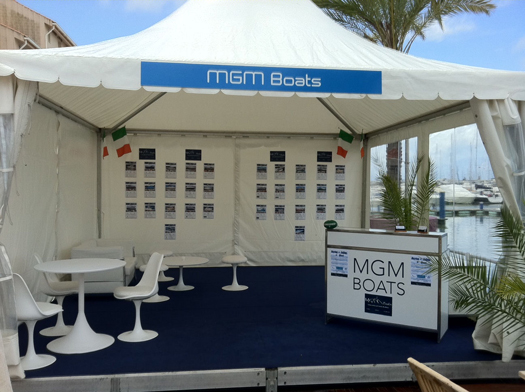
The MGM Boats Stand at the recent Villamoura Show
Simon Coveney Appointed Marine Minister
Cork sailor Simon Coveney (38) has been appointed as Minister of Agriculture, Food and Marine in the new cabinet of the Fine Gael/Labour Government formed yesterday.
The announcement has been welcomed by various marine interests pleased to see Marine back at the cabinet for the first time since the Department was dismantled by Fianna Fail's Bertie Ahern in 2002.

Marine Minister Simon Coveney TD
The appointment means Taoiseach Enda Kenny has kept good an election promise to reinstate the Marine department. A decade of lost opportunties has meant the sector has suffered through lack of infrastructure and coastline planning.

Simon Coveney at the helm of his yacht Wavetrain. Photo: Bob Bateman
"Simon is someone who understands the Sea as a sailor himself but also in his work as an MEP where he was involved in a number of major European maritime projects. This is a great opportuinty for the Marine. We look forward to working with him to develop this untapped resource." said David O'Brien of the Irish Marine Federation.
Simon was first elected to the Dáil in 1998 as one of Fine Gael's youngest TD's aged 26. He replaced his father Hugh Coveney TD following his untimely death.
Simon follows his father in to the post of Marine Minister. Hugh held the post in 1994.
Simon holds a B.Sc. in Agriculture and Land Management from Royal Agriculture College, Gloucestershire. He was also educated at Clongowes Wood College, County Kildare; University College Cork, and Gurteen Agricultural College, County Tipperary.
A keen fan of all competitive sport he has worked as a sailing instructor at his club Royal Cork Yacht Club in Crosshaven and been involved in many sailing regattas.
In 1997/8 he led the "Sail Chernobyl Project" which involved sailing a boat 30,000 miles around the world and raising €650,000 for charity.
In 2006 he contributed to RTE's series The Harbour and in a memorable quote, the Cork TD and former MEP said: "When somebody asks me the question, what's the one thing that's special about Cork?, I'd say the harbour."
Single Maritime Authority 'Essential for an Island People'
The new Government's plans to merge marine responsibilities into a single department has received a guarded welcome from Ireland's marine trade bodies.
In today's Irish Times, the Irish Marine Federation is quoted as saying a "single maritime authority is essential for an island people".
Federation of Irish Fishermen chairman Seán O'Donoghue also welcomed the merger plans, but not if it becomes a subset of a larger department.
Fergus Cahill, chairman of the Irish Offshore Operators' Association, which represents oil and gas companies, said the splitting-up of the Department of Marine in 2002 was a "disaster".
He welcomed the new programme's promise to promote offshore drilling and "streamline" the regulatory process for developing mineral resources.
Marine Leisure Conference Aims to Combat Downturn
Over 120 marine trade and leisure companies from Ireland and Wales are coming together in Dun Laoghaire this week to examine ways to combat the current economic downturn on both sides of the Irish Sea.
Speakers at the conference at the Royal Marine Hotel are drawn from Industry representative organisations, tourism bodies, marine leisure companies, business development specialists, economists and irish-sea.org will provide insights and share knowledge on how to survive the downturn and emerge leaner and stronger when the recovery arrives.
The conference will also provide an industry wide networking opportunity for companies from Ireland and Wales to share experiences and develop business links across the Irish Sea.
Irish-sea.org is an Ireland/Wales Interreg IVA Programme to develop the Irish Sea into a marine leisure centre of excellence.
The programme provides help and support to the sector on both sides of the Irish Sea through marketing, business and vocational training and assisting in the acquisition of research data.
The Irish Marine Federation's Steve Conlon is to meet with Ms. Mirna Cieniewicz, Secretary General of The European Boating Industry, to discuss the implications of the changes recently announced by EU Vice President Antonio Tajani.
Vice President Tajani announced changes to the EU Recreational Craft Directive, a move towards a common European Union Boat license and a new EU Tourism Policy.
The RCD has been unchanged since its adoption, however, there has been a wide divergence in its interpretation in different member states. The new RDC intends to remove ambiguities and provide clarity. It will also deal with environmental issues. It is expected that the full text of the new RCD will be available in November.
Vice President Tajani revealed that the Commission was investigating if it would be helpful to apply in all member states a UN resolution which would create a common certificate of competence for all boaters. The Commission expect to make a survey at the beginning of 2011.
On the 30th of June the Commission adapted a communication on a new political framework for tourism. This is a direct result of the Lisbon Treaty. The Vice President insists that there is a dedicated action to develop sustainable coastal and marine tourism and that the European Marine Leisure Industry should take full advantage of this opportunity.
The IMF will continue to work with the European Boating Industry to lobby the EU to ensure that EU legislation is fully supportive of the industry as a whole. The IMF will continue to seek to ensure that the RCD is fully integrated and policed in Ireland at the same time ensuring that Failte Ireland and Tourism Ireland promote marine leisure tourism as a fully integrated tourism product at home and overseas.
Proposed 800 berth Cork Marina Would Rival Dun Laoghaire
The redevelopment of the 24-acre Marina Commercial Park in the heart of Cork city's docklands is expected to create 5,000 jobs once completed.
City manager Joe Gavin said: "This 24-acre site is at the heart of Cork's docklands and the announcement is a crucial step in realising Cork City Council's vision for the whole docklands area."
"It's a fantastic story in these bleak times and of course it would greatly add to boating in the south. It's also an example to the rest of the country of the opportunities that lie in city waterways", said David O'Brien of the Irish Marine Federation.
The proposed development features:* More than 800 apartments, providing homes for up to 2,230 people.
* A marina where they can park their boats.
* A range of community amenities.
* A visitor and science centre, the Ford Experience, which is expected to attract up to 300,000 visitors annually.
* A new central plaza to provide a hub for the community, including a creche and library.
Politicians Aim to Restart Courtown Marina Project with EU Cash
Wexford Councillors and County Council officials have come together to seek European assistance to help save the stalled Courtown marina, news of the move was published in the Gorey ECHO.
"This is precisely the kind of question our politicians we need to ask if we're ever to complete the necklace of marinas around our coastline, said the IMF's David O'Brien.
Plans for a 230-berth marina in Courtown were unveiled in November 2008 and included apartments and retail units. The plans also included the construction of a breakwater off the south pier in the village.
Childers visited the north Wexford seaside village to discuss the possibility of restarting the project which has been stalled since 2008 due to the economic recession.
Following her meeting with council officials and county councillors, Ms. Childers submitted a Parliamentary Question regarding the possibilities for getting financial assistance for marina facilities in Ireland.
In the question Childers says: "Is there funding opportunities or other supports available from the European Union in order to assist in providing finance for the development of marina facilities in Ireland to enhance our tourism product?"
Ireland, as an island nation, is working to develop its infrastructure as a destination for sailing holidays.
"The development of marinas in a sustainable fashion at key locations around the coast of Ireland to accommodate sailing and boating activities would benefit from investment from a tourism and economic development point of view." said Childers.
For every euro spent berthing in Courtown marina visiting sailors will spend 10 in the village, according to our research, says O'Brien. Huge Tourism benefits can literally come in on the tide, if only we had the infrastructure", he added.
The IMF is the national body that represents the marine leisure industry including the Irish Marina Operators Association (IMOA).
The County Council carried out a feasibility study which found that the marina had to be self-funding through sale of apartments and other units as there was no government funding for such developments.
Speaking this week, Director of Services with Wexford County Council, Niall McGuigan said: "It is currently not financially feasible but we hope for the best. We would be very eager for it to go ahead."
Mr. McGuigan said that the project was on hold until either funding became available, an investor was found or a combination of both.




























